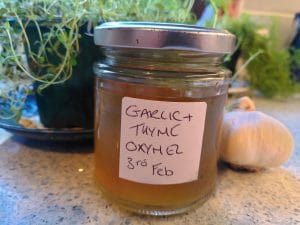Currently Empty: £0.00

Warming Winter Remedies
At Grass Roots Remedies, we work to rekindle people’s passion for our traditions of community herbal health care in an ecologically sustainable way, whilst acknowledging the contributions from other cultural traditions. For much of the year, we look to the hedgerows, forests and coast to find locally available, sustainable plant, fungi and seaweed communities. In the Winter though, we look more to our kitchens. Many of you will be familiar with the health supporting properties of some very common herbs and spices, pungent garlic and ginger are often used in cold remedies, along with lemon and honey. Turmeric has been made very popular in recent years for an A-Z of different conditions.
Herbal remedies have long been part of the food and medicine traditions of Europe. In the UK, we borrow and share with many other European countries which have similar climate conditions, plants and common ailments. We also often use herbs and spices from around the world, reflecting a long history of trade and of colonisation.
Below are some of our favourite concoctions, maybe they are also recipes, but the fun in putting them together is to adapt them according to your tastes and cupboard contents and come up with new concoctions personal to you. It is hard to attribute these recipes as they were probably initially handed down through families and communities before written recipes even existed. Nevertheless, we would like to thank those who experimented before us and encourage those planning to experiment in future. We want to encourage everyone to know that Folk Medicine is for All Folk.
You can find out more about the work we do at www.grassrootsremedies.co.uk or follow us on Instagram or Facebook, there’s a video about some of our work in Wester Hailes, Edinburgh here: https://www.youtube.com/watch?v=mq519Pmt8h4 including our low cost community herbal clinic for residents of the area. In order to fund the low-cost clinic, we rely on donations from the public such as our Pay it Forward clinic donations and sales of products in our online shop. We also run courses on wild food and medicine, including our very popular Wild Things: a Year of Wild Food and Medicine, which is open for bookings until March 2022. For those interested in taking their studies further, we recently formed a collaboration with the Plant Medicine School to offer the Community Herbal Apprenticeship as the Plant Medicine School Scotland, enrolments will open in February 2022.
Four Thieves’ Vinegar
The story behind this remedy is that, in Medieval France, there was a spate of robberies in homes where people had died of the Black Death. No one could understand how the thieves were going into houses which were full of the dark vapours of the Plague and surviving. When the four thieves (who may or may not have been brothers) were discovered, they revealed that they had been using a medicinal vinegar to stave off the Plague vapours. At first, they wouldn’t reveal their secret recipe, but in the end they did, in return for a quick death!!!!
You’ll find many recipes online for this vinegar, often called Fire Cider on the American continent. The basics are Garlic, Apple Cider Vinegar and some culinary herbs, we recommend using whatever you have in the kitchen, especially slightly tired looking supermarket pots of herbs that you haven’t got round to finishing off.
Combine:
- Apple Cider Vinegar
- Chopped / Crushed Garlic*
- Culinary Herbs: we like: Thyme, Mint, Sage, Rosemary and small amounts of Lavender
- Optional Spices: Ginger; Horseradish; Chilli (this makes it fire cider)
Leave for a few weeks
Strain and drink the liquid either undiluted or in hot or cold water to prevent and treat infections
*when adding Garlic to vinegar, make sure to crush or chop the Garlic and then leave for 15-20 minutes before putting it in. This is because enzymes are released when the Garlic cell walls break which act on compounds in the Garlic, creating other compounds with more medicinal benefits. Once you add the Garlic to vinegar (or heat it to a high temperature), the enzymes stop working and these new compounds are no longer being created. This is why you should always chop or crush Garlic well before cooking it and ideally, should add the Garlic towards the end of cooking and only warm it through gently.

Garlic and Thyme Oxymel
If you’re ready for a slightly more complicated remedy, with a slightly more complicated name, let us introduce you to an oxymel. An oxymel is a mixture of equal parts herb infused vinegar and honey. It combines the medicinal properties of the herbs, vinegar and honey whilst the addition of the honey often makes it more palatable for many people. If you don’t use honey in your diet, you could use another natural sweetener such as agave or maple syrup, although this can get quite expensive.
Make an Infused Garlic and Thyme Vinegar
Combine:
- Chopped / Crushed Garlic (see note above)
- Small handful of Thyme
- Apple Cider Vinegar
Leave for a few weeks in a cool, dark place, shaking now and then
Strain and retain the liquid
Add equal volume of Honey to the Infused Vinegar
Shake to mix, you may need to warm it depending on how thick the honey is, do this gently, start by using the heat of your hands to warm, then try a low heat such as by a radiator or on a sunny windowsill
You now have an oxymel, take on its own or in hot water to combat coughs and colds, Thyme has a strong affinity for the respiratory system and Garlic is highly anti-infectious.
The oxymel also makes an excellent base for a salad dressing or marinade




